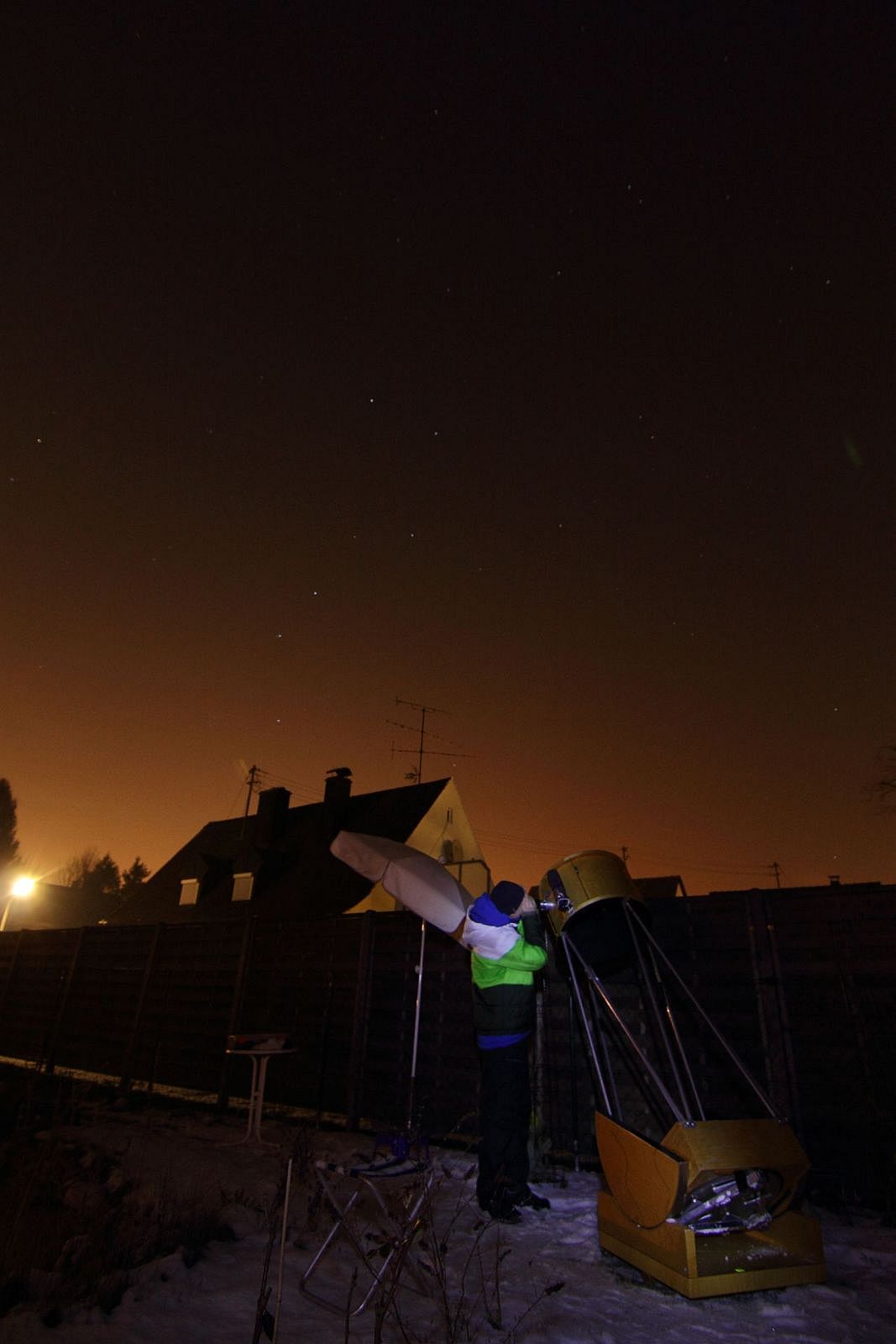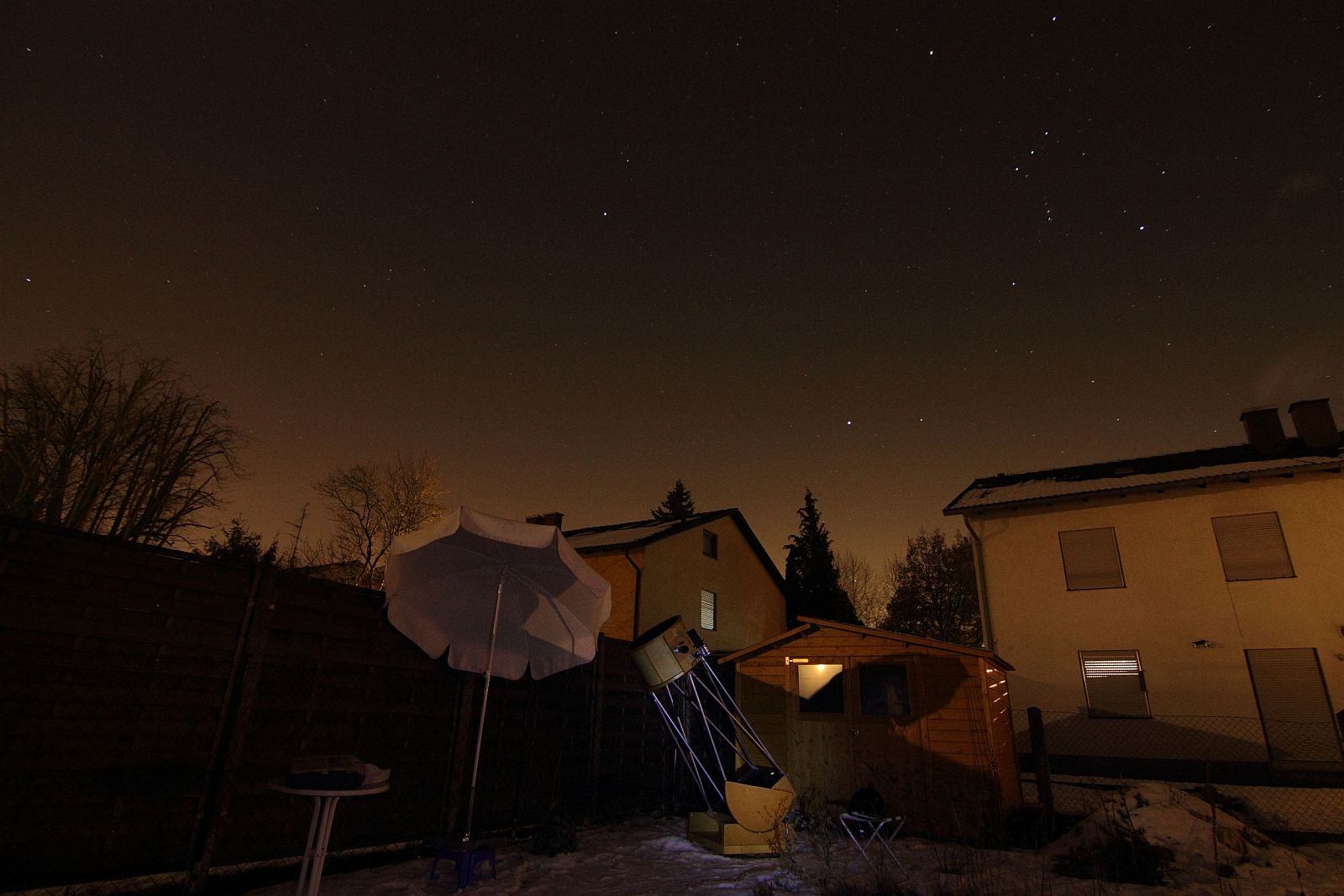Ralph observes the supernova

Ralph's 20-inch, view to South

Ralph observes the supernova
|
Ralph's 20-inch, view to South
|
The evening sky was clearer than most forecasts had predicted. The color of the SN was a nice yellowish/orange, which would surely
have been even more distinct in a darker sky. Using different magnifications, and experimenting with the focus, the SN looked at times
about equal as the 10.6 mag star (TYC 4383-1099-1), and at times clearly brighter - more like V = 10.4. My conviction that the SN was
at least a bit brighter than TYC 4383-1099-1 was strengthened by one-to-one comparisons: When comparing the 10.0 mag star directly
to the 10.6 mag star, their difference was more definite than the respective difference between the 10.0 mag star and the supernova. I
compared the latter pair to Pollux and Castor, and their difference looked quite similar (which is about 0.45 mag). So we both agreed on
V = 10.5, and if in doubt I would even incline to the brighter side of that.
Below M81, above M82 with SN (Image: Ralph Muth)
|
Chart of AAVSO with comparison magnitudes
|